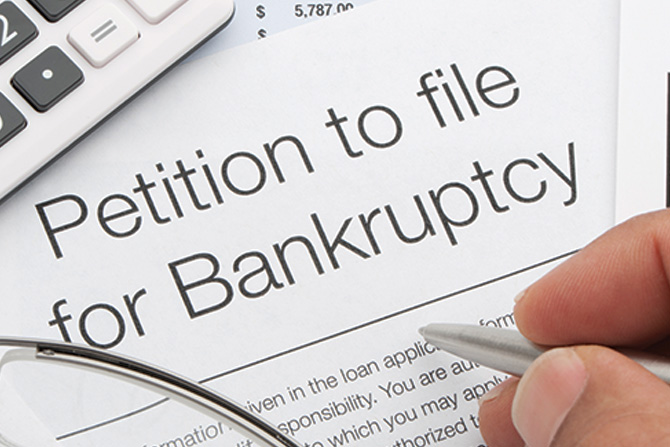By Michael Fielding, Husch Blackwell LLP
Is your institution prepared for the coming wave of small business bankruptcy filings that will be crashing upon us later this year and early next year? The financial distress that COVID-19 is wreaking for small businesses is well known. But what many lenders do not realize is that Congress has orchestrated a perfect storm for small business bankruptcy filings. In February 2020 the Small Business Reorganization Act (SBRA) went into law which made it much cheaper and easier for small businesses to successfully file for Chapter 11 bankruptcy protection. But SBRA originally had one important limitation: to be eligible for this special relief the debts were capped at $2,725,625. But the Coronavirus Aid, Relief, and Economic Security (CARES) Act dramatically increased that debt limit to $7.5 million but Congress provided a one-year sunset clause meaning it drops back to the $2.725 million limit on March 27, 2021. This creates a huge incentive for small businesses that are financially struggling to file for Chapter 11.
Indeed, there is strong precedent that we will see a big uptick in bankruptcy filings as this deadline approaches. Back in 2005 Congress enacted several creditor-friendly amendments to the Bankruptcy Code. As the effective date of that new law approached, there was a large uptick in bankruptcy filings as debtors sought to take advantage of the favorable law. There is nothing to suggest that this same pattern will not be repeated this time.
What are the specific provisions of SBRA that incentivize small businesses to avail themselves of it?
- Expedited timelines including a conference within 60-days of filing regarding the case and a deadline on the 90th day for the debtor to file a plan of reorganization;
- Critical changes key procedural rules (e.g., the debtor does not have to file a disclosure statement regarding its financial condition but rather only has to submit its most recent financial statements);
- The debtor is the exclusive entity who may file a plan of reorganization;
- It is much easier to confirm a proposed plan including the fact that the “absolute priority rule” doesn’t apply (meaning the owner of the company simply has to pay disposable income to creditors for 3-5 years and the owner retains full ownership of the company even if creditors are not paid in full);
- Even if all classes of creditors reject the plan the Court can still confirm it; and
- The appointed trustee has a supervisory role similar to Chapter 12 and 13 cases while leaving the debtor in possession of assets and control of the business.
Lenders whose small business commercial loans will undoubtedly begin to feel the impact of SBRA cases in the coming months. Given the incentive small business debtors have to take advantage of this law, the corresponding domino effect will be many banks will be faced with SBRA cases where the debtors seek to cramdown their loans and modify loan repayment terms—often in ways that lenders find very objectionable but which are legally permissible.
So what can lenders do now to mitigate their risk? The best medicine is preventative medicine. Lenders need to take a good, hard look at their small business loans that are struggling. They should closely analyze their key loan documents—promissory notes, mortgages, security agreements and guaranties—to make sure there are no defects and that proper perfection steps have occurred. Once they know where they legally stand vis-à-vis their debtor they should be prepared to have meaningful workout discussions with borrowers. Loan extensions or modifications are always short-term resolutions to help stave off a bankruptcy.
Entering into forbearance agreements can provide borrowers with essential additional time to resolve their financial challenges (or liquidate key collateral) while simultaneously releasing the lender from any known or threatened lender liability claims. These loan workouts provide golden opportunities to fix any defects the lender may have found in the loan documents.
If, despite these preventative measures, a bankruptcy still seems likely, a lender may decide to take more aggressive action to enforce its loan documents such as by sending out turnover letters to account debtors for outstanding accounts receivable or seeking to repossess and liquidate personal property collateral. Alternatively, if the borrower signals bankruptcy is clearly going to happen, the lender may want to proactively negotiate with the borrower a cash collateral order or even provide debtor-in-possession financing which will enable the borrower to continue operating while in bankruptcy but providing the lender with key bankruptcy protections. Once the bankruptcy is filed, the lender should closely monitor the situation and make sure its rights are promptly enforced.
Unfortunately, there is not a “one-size-fits-all” approach to SBRA bankruptcy filings. Each is its own unique situation requiring close attention by a lender. But by proactively seeing the problems on the horizon, lenders can take steps now to be better prepared when the storm finally hits them.
By Michael Fielding, Husch Blackwell LLP
This story appears in Issue 4 2020 of The Kansas Banker Magazine.









